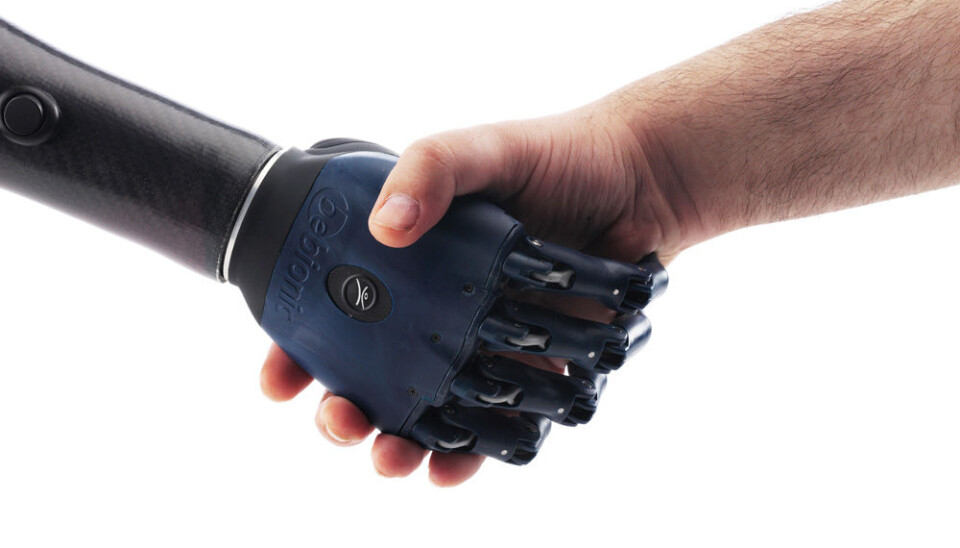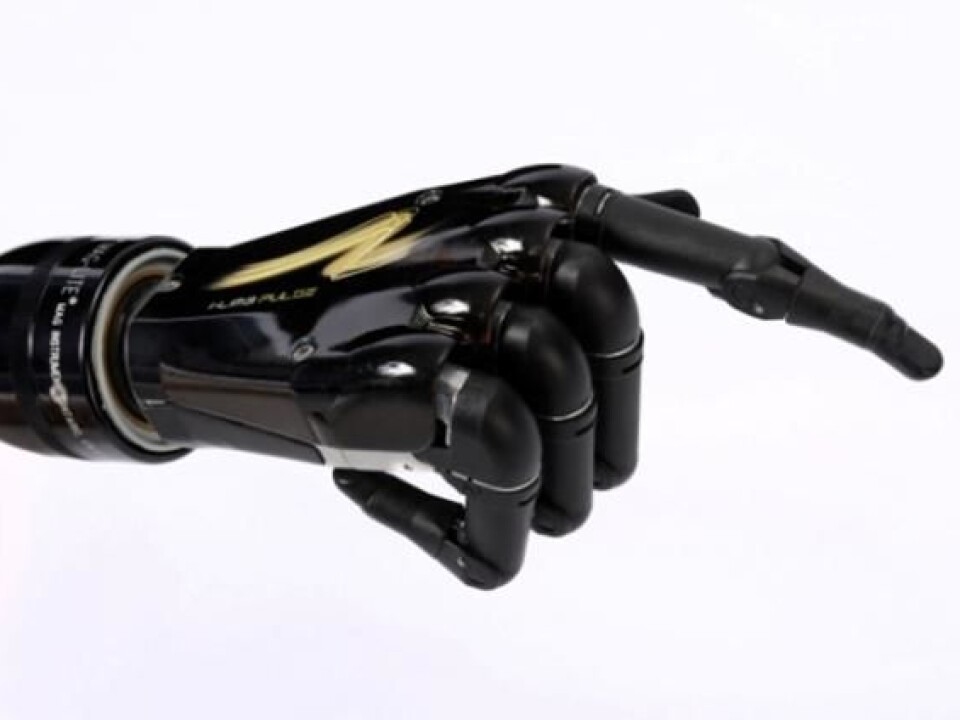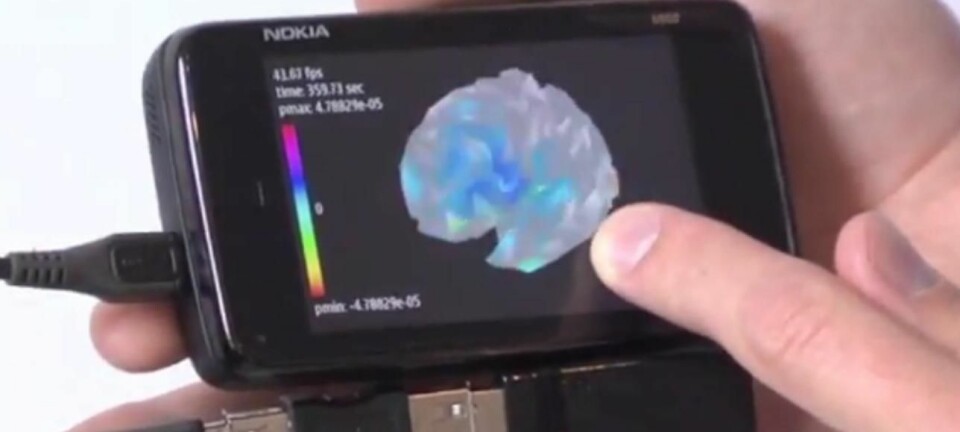An article from Norwegian SciTech News at NTNU

Smarter prostheses using iPhone technology
Simple, cheap microtechnology paves the way for a new generation of prostheses.
Denne artikkelen er over ti år gammel og kan inneholde utdatert informasjon.
Losing a limb can be a devastating experience, and while electrically powered prostheses can serve as a replacement for a lost arm, they are notoriously difficult to operate, and will never fully replace normal hand function.
Researchers at the Norwegian University of Science and Technology (NTNU) are working to improve this situation through the use of smartphone technology.
This technology, called an accelerometer, gives users a better sense of the orientation of their artificial limb – thus making the limb easier to operate.
A helping hand

An accelerometer is a tool for detecting changes in gravity or velocity, and enables a device to determine its orientation. Accelerometers are relatively inexpensive, and are widely used in everything from video consoles to smartphones.
The accelerometer in your smartphone helps it determine whether you want to look at a photograph in a portrait or landscape format, for example.
Øyvind Stavdahl, an associate professor at NTNU's Department of Engineering Cybernetics and Anders Fougner, a PhD candidate in the department, have shown that when an accelerometer is used in a prosthetic arm, it is easier for the user to recognize exactly how the arm is oriented in space.
"Prostheses are driven by the remaining muscles in the severed limb. Sometimes, however, the prosthesis receives atypical signals from the muscles, which can confuse the system and lead to the prosthesis performing the wrong movement," Stavdahl explains.
Knowing the orientation of the arm is essential for normal prosthetic function. It simply makes it a lot easier to operate.
Requires a lot of practice
Since the first electrically powered prostheses appeared in the 1940s, there have been huge technological advancements in the field. Despite this, modern upper limb prostheses share the same basic structure as their 1940's forbears, with a mechanical hand that can grasp. Sometimes the arm includes a rotating wrist.
An amputee operates his or her prosthesis by moving a muscle, which then sends out a kind of electrical signal.
Electrodes placed on the surface of the skin detect these "myoelectric" signals and convert them to movement using a microprocessor and motor. Activating specific groups of muscles will lead to specific movements, such as opening or closing the hand, or rotating the wrist.
"Mastering these hand movements requires a lot of practice," says Fougner.
Problems at home
In fact, Stavdahl and Fougner's research has shown that without any training, the user's prosthesis will make the wrong move around 30 per cent of the time. Hence, amputees are usually offered extensive training in a clinical setting, but when they return home, they start running into problems.
"A simple task, like picking up a cup of tea, might prove difficult," says Stavdahl.
"If you try to do this when the arm is in an awkward position, that is, a position that you haven't practiced with before, the muscles will start sending unfamiliar signals to the prosthesis."
This will often lead to the prosthesis doing the opposite of what the user intended – and the cup will fall to the ground. An accelerometer helps to compensate for these unfamiliar signals, reducing the user's frustration.
Commercial potential
Prosthetic limbs can be tricky to manoeuvre. Younger people generally learn quicker, but some give up, and never manage to use the full potential of the device.
"Our hope is that this application might improve the lives of people," says Fougner.
But he stresses that it is equally important for prosthetic users to be given adequate training. Their research has shown that an accelerometer, combined with proper training, reduces the frequency of incorrect movements from 30 to 5 per cent.
Although this is a niche market in Norway, where there are only about 600 upper limb prosthetic users, the new approach has huge commercial potential worldwide, particularly in Asia and the Middle East.
"A more functional prosthesis might be on the market in a couple of years," says Stavdahl.
The research is being conducted in collaboration with researchers at the University of New Brunswick in Canada.
--------------------------------------------
Read the article in Norwegian at forskning.no































